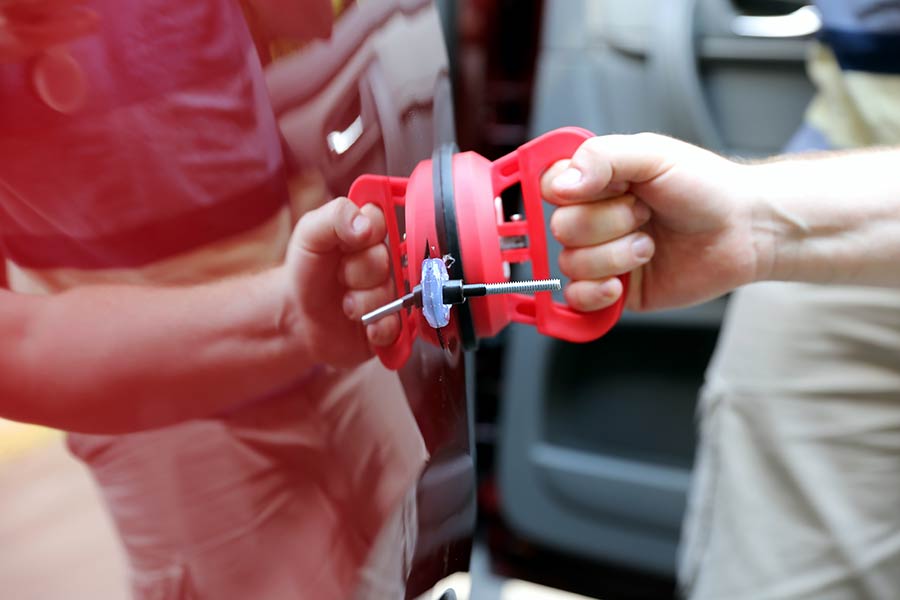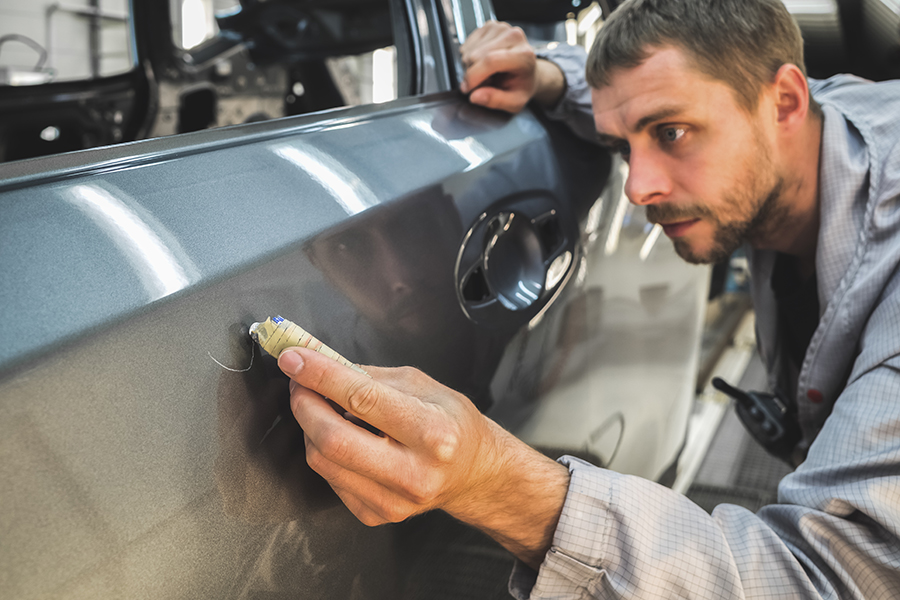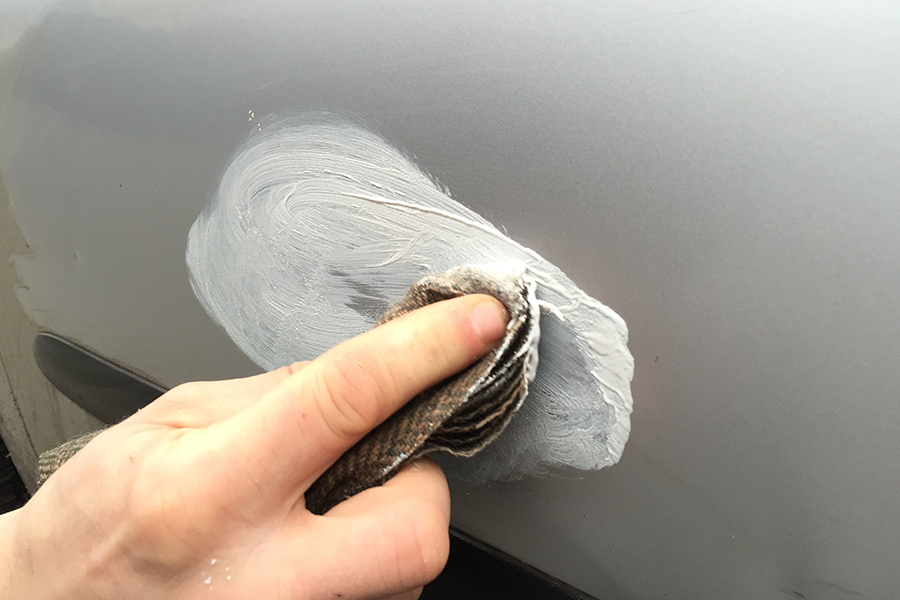Ever had a ding in your car and thought, "Well, that's it for my ride"? You're not alone. For ages, folks have been bumping, scraping, and denting their vehicles, turning pristine rides into patchwork puzzles of memories and mishaps. But here's the good news: large dent repair has come a long way from the days of hammering out imperfections and crossing fingers. Today, with the right know-how, even the most daunting dents can be made to disappear, making your car look as good as new. This guide is your first step towards mastering the art of fixing those big dents without breaking a sweat or the bank.
Key Takeaways
- Fixing big dents often needs a pro. Look for someone skilled in Paintless Dent Repair (PDR) for less mess.
- Not all dents are the same. Some need special care like crease repair. Know what you're dealing with.
- Before fixing, get a clear price. Ask for a detailed cost estimate to avoid surprises.
- Check if insurance can help. Some repairs might be covered, saving you money.
- Extra services like polishing or paint touch-ups could make your car look even better after the dent repair.
- Choosing the right repair shop is key. Look for places with good reviews and trusted by others.
Understanding Large Dent Repair
What Is Large Dent Repair
Large dent repair is about fixing big dents in cars. These dents can make a car look bad and not work right. It's important to fix these to make the car look and run well again. People use different ways to fix large dents. Some common methods are pulling the dent out, filling it, and painting over it. Each method has its own way of making the car look good again.
Common Causes of Large Dents
Many things can cause big dents in cars. One main reason is accidents. When cars hit each other or something else, they can get big dents. Weather can also be a problem. For example, hailstorms can leave lots of dents on a car's surface. Even being in a parking lot can be risky. Cars sometimes bump into each other or hit things like shopping carts, causing dents.
- Accidents
- Hailstorms
- Parking lot mishaps
Benefits of Professional Repair
Getting a pro to fix big dents in your car has lots of perks. Your car will look much better, which is great if you care about how it looks. This also helps keep your car's value from going down. Pros have special tools and know-how to fix dents the right way. They can make your car look like new again.
Paintless Dent Repair (PDR)
Basics of PDR
Paintless Dent Repair, or PDR, is a method to fix dents. It does this without harming the car's paint. This technique uses special tools. They push or pull the dents from the panel's other side. PDR works best for small and medium-sized dents.
The process keeps the original paint intact. It is not good for dents with damaged paint or very sharp edges. Most cars with minor to moderate dents can benefit from PDR.
Advantages of PDR
One big plus of PDR is it costs less than old ways of fixing dents. It does not need fillers or paint. So, you save money on materials and labor.
PDR also takes less time. Many repairs finish in just hours, not days. This means your car is not at the shop for long.
Another advantage is it keeps your car's original paint. This helps your car keep its value better over time.
PDR for Large Dents
PDR can sometimes fix big dents too. But, there are limits. The dent's size and where it is can affect if PDR will work.
Big dents on flat surfaces are easier to fix than those on edges or curves. A professional should look at the dent first. They can tell if PDR is a good option.
Safety Considerations
It's important that a pro does PDR. Trying to do it yourself can make things worse. You could damage the paint or even make the dent bigger.
DIY repairs might seem cheaper, but they come with risks. Without the right tools and knowledge, you could hurt yourself too.
Always wear proper safety gear if you try any repair work. Gloves and eye protection are must-haves.
Major Dent Repair Techniques
Traditional Methods
Body shops often use traditional dent repair methods. This involves applying fillers to the dent. After that, they repaint the damaged area. This method can match your car's original color. It makes the repair look like new. But, it takes more time than PDR.
Body shop services are needed for this repair. They have the tools and skills. Traditional repair can take several days. This is longer than PDR.
When to Use Conventional Repair
etimes, PDR is not enough. This is true for severe dents. If a dent is too deep, conventional repair is better.
When paint damage is extensive, traditional methods are used. They can fix the paint and the dent at the same time.
Structural damage also needs conventional methods. Only these repairs can ensure your car's safety and look.
Comparing Costs and Time
PDR usually costs less than traditional repair. The difference in cost depends on the dent size and location. Smaller dents fixed with PDR can be cheaper.
Repair time also varies between methods. PDR might take a few hours. Traditional repair could take days. The size of the dent affects this too.
Several factors influence cost and time. These include the dent's size, location, and if there's paint damage.
Crease Repair Process
Identifying Creases
A crease in a dent looks like a line pushed into the car's body. It is not just a simple bump or hollow. These can be long and thin or short but deep. They often appear on doors, fenders, and the hood. Creased dents are tough to fix because they stretch the metal and disrupt its original shape. This makes them more challenging than regular dents.
Tools Used in Crease Repair
Professionals use specific tools for fixing creases. They include crease tabs and glue pullers. These tools help in pulling the dent out without harming the car's paint. Heat guns and lights are also important. The heat gun softens the area, making it easier to work with. Lights help technicians see the crease better. Precision tools are vital in this process. They allow for careful adjustments that bring back the car's smooth surface.
Steps for Crease Repair
The first step is assessing the crease carefully. Technicians look at how deep and long it is. They decide which tools will work best.
Next, they apply specialized tools like crease tabs. These tabs attach to the dent. The glue puller then gently pulls them, easing the crease out.
The process of removing a crease is gradual. It requires patience and skill. Each pull slightly adjusts the metal back to its place. Sometimes, heat is applied to make the metal more flexible. This helps in correcting the shape without cracking the paint.
Repair Assessment and Estimates
Initial Inspection
A thorough visual inspection is crucial. Experts use bright lights to spot every detail. This helps find hidden damage not seen at first. They write down all the damage they see. This step makes sure nothing is missed.
Lights help show dents that might hide. Writing down what they find is a must. This way, all damage gets fixed.
Cost Estimates
Getting a detailed cost breakdown is important. The size and place of the dent change the price. Always ask for more than one quote.
Big dents often cost more to fix. Where the dent is also affects the price. It's smart to compare prices from different places.
Time Estimates
Repair time can vary a lot. It depends on how complex the dent is. Setting realistic expectations about how long it will take is key.
Small dents might take just a few hours. But, big or complex ones could take days. Knowing this helps plan ahead.
Insurance and Reporting
Insurance Coverage Options
Many insurance plans can help with large dent repair. These include comprehensive, collision, and sometimes even personal injury protection (PIP) insurance. It's crucial to check your policy closely. Every plan has different details about what it covers.
You might also have to pay a deductible before insurance pays for the rest of the repair. This cost varies by policy. Knowing this can help you decide if filing a claim is worth it.
Reporting Procedures
When you notice a dent, it's important to report it to your insurance company quickly. Here's how:
- Call your insurance provider.
- Explain what happened.
- Send them photos of the damage.
Taking clear pictures from different angles is key. They show how big and deep the dent is. This helps your insurance understand the repair needs better.
Reporting on time is also vital. Waiting too long might lead to your claim being denied. So, act fast after finding any damage.
Skip Insurance with PDR
etimes, getting a paintless dent repair (PDR) is cheaper than paying your deductible. If the PDR cost is less, paying out of pocket makes sense. This way, you avoid a possible increase in your monthly insurance premium.
Choosing PDR can be a smart move for smaller dents or dings. It's quick and usually costs less than traditional repairs. Plus, you don't have to deal with insurance paperwork or wait for claim approval.
Additional Services Offered
Home Repair Services
Mobile dent repair services are now available. They come to your house. This is very convenient. You do not have to leave your home. But, you need a good space for them to work. The area must be big enough. It should also be safe for the repair work.
Transportation Options
If your car can't move, tow services help. They can take your car to the shop. You might also use ride-sharing or buses. This is important if you need to go places while your car is being fixed. Planning how to get around is smart. Do this before your car goes to the shop.
Rental Car Availability
e shops offer rental cars. This means you can drive a different car while yours is being fixed. Insurance often covers this cost. Having a rental car is very helpful. It lets you keep doing your things without waiting.
Choosing a Trustworthy Service
Quality Indicators
When you need a large dent repaired, look for signs of quality work. A smooth finish is key. It shows the service pays attention to details. The paint color should perfectly match your car's original shade. This is crucial for the repair to look good.
High-quality materials and tools are a must. They ensure the repair lasts long. Services that use the best materials show they care about their work.
Customer Reviews
Reading reviews is important before picking a repair service. Look for consistent positive feedback. It means the service does good work often.
Detailed customer testimonials are valuable. They give you a clear picture of what to expect. Good reviews often mention how well the service matched the paint or how smooth the finish was.
Technician Expertise
Certified technicians are important. They have the skills to fix big dents properly. Experience with large dents matters too. It means they know how to handle tough jobs.
Ongoing training keeps technicians up-to-date. This benefits you because they use the latest repair methods. Skills updates show a commitment to quality.
Summary
Repairing a large dent in your ride isn't just about making it look good again—it's about restoring your pride and joy to its former glory. From understanding the basics of large dent repair, exploring paintless dent repair (PDR), to diving into major dent repair techniques and everything in between, we've covered what you need to know to make an informed decision. Remember, choosing the right service is crucial; it's the difference between a car that looks "just okay" and one that turns heads.
on't let that dent put a damper on your drive. Whether it's assessing the damage, dealing with insurance, or picking a trustworthy service, you've got this. And hey, while you're at it, why not give your car the full treatment? A little extra care goes a long way. Ready to get started? Your car's comeback story begins now. Let's bring back that showroom shine together!
Frequently Asked Questions
What is Paintless Dent Repair (PDR) and when can it be used?
Paintless Dent Repair, or PDR, is a technique to fix dents without needing to repaint your car. It's perfect for small to medium dents where the paint hasn't been damaged. Think of it as massaging the dent out from behind.
How do I know if my dent qualifies for PDR or needs major repair?
To figure out if your car's dent can be fixed with PDR, check if the paint is intact and the dent isn't too deep or sharp. Major repairs are needed when there's paint damage, the metal is deeply creased, or the body's shape is significantly altered.
What does a crease repair process involve?
Crease repair smoothens out lines caused by impacts, using tools to gently push or pull the metal back into place. Imagine ironing a wrinkled shirt but with metal and precision tools.
How are repair assessments and estimates done for large dents?
Repair assessments for large dents involve closely examining the damage to determine the best repair method and calculate the cost. It's like a doctor's check-up but for your car, determining the best treatment plan for its recovery.
Will my insurance cover large dent repairs?
Insurance coverage for large dent repairs depends on your policy details. Generally, if the damage is due to an accident and you have comprehensive coverage, you're likely covered. It's like having a safety net that catches you financially after an unexpected tumble.
What additional services are often offered with dent repair?
Alongside dent repair, many services offer paint touch-ups, detailing to make your car look brand new, and sometimes alignment checks. It’s like giving your car a spa day after it’s had a bit of a rough time.
How do I choose a trustworthy service for repairing my car's dents?
Choosing a trustworthy service involves checking their reviews, certifications, and guarantees. It’s like picking a good doctor based on their bedside manner and credentials; you want someone who knows what they’re doing and makes you feel confident in their care.
















